Around the Neighborhood - Volume 2, Number 8
In 1973, Family Communications initiated a print newsletter titled Around the Neighborhood. This newspaper-like publication was largely directed towards parents but included some material for children as well. The information below documents the eighth issue from Volume 2 of Around the Neighborhood.
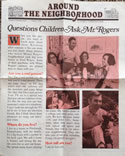
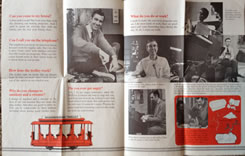
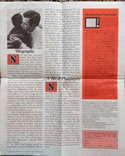
[click images for larger view]
Articles Included:
Articles
QUESTIONS CHILDREN ASK MR. ROGERS
When you like people, you want to know more about them. Knowing what someone is like can make you feel closer. Many children who watch Mister Rogers' Neighborhood each day write letters to Fred Rogers. Some of their questions, with Mister Rogers' answers, are printed here to share with you.
Are you a real person?
Yes, I'm a real person just the way you're a real person. There are some things on TV that aren't real -- the cartoons and the monsters and scary things like that, but I'm a real person. Your TV set is a special way that you can see a picture of me. It's like the way you can hear someone's voice on a telephone. I can't look out through the TV set to see or hear my television friends. But I think about them whenever we make our television visits.
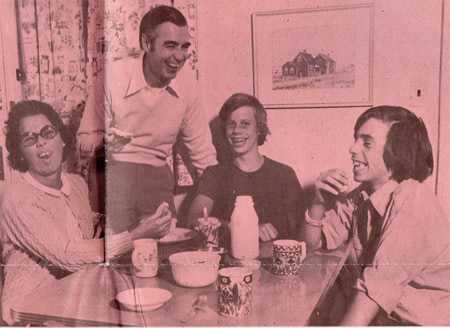
Where do you live?
I live in a house in Pittsburgh, Pennsylvania, with my family. It's a big house with a garden in the back yard. My wife's name is Joanne, and during the day she cares for us and our house. She spends many hours playing the piano. She teaches piano at a college and plays piano concerts. We have two sons, Jamie (15) and John (13). Sometimes when they aren't busy with school and sports and friends, they visit in our television neighborhood. They also take care of our pets, including Frisky (in picture at right).
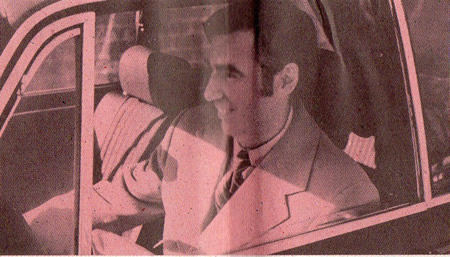
How tall are you?
I am six feet tall.
Can you come to my house?
I often wish I could! But I am very busy each day planning and making programs. And I need to spend my relaxing time with my family, just the way your family does.
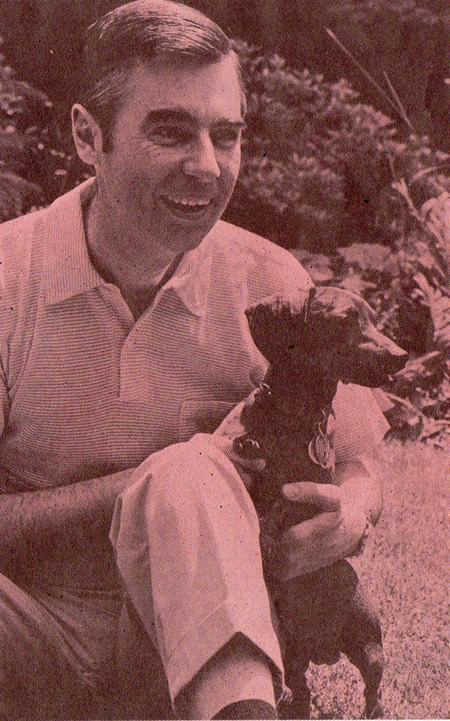
Can I call you on the telephone?
The telephone you see in our television house does not work for regular calls. But I do like to have "letter visits" with children and families who watch our programs. What my television friends write in their letters helps me to know them as real people.
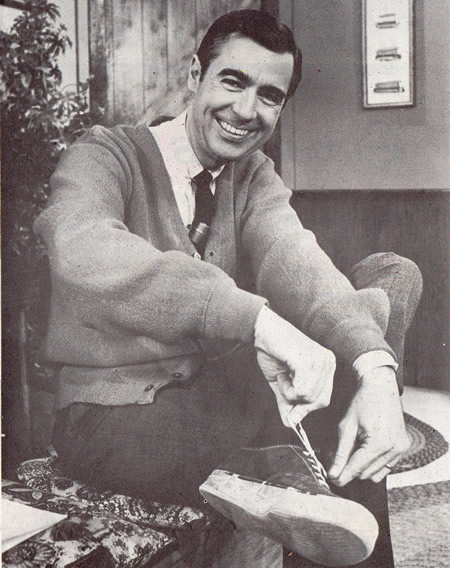
How does the trolley work?
The trolley runs on tracks like an electric train. It stops and starts when I push the button of the switch on my window seat.
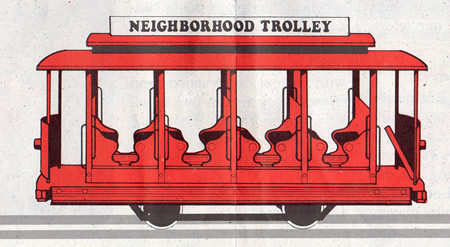
Why do you change to sneakers and a sweater?
I change to sneakers and a sweater at the start of our visit because they are more like play clothes. And they are good to relax in. You can be comfortable in them without worrying about getting good clothes dirty.
Do you ever get angry?
Yes, I do get angry sometimes: when Mr. McFeely is always too busy to stop and visit, and if my sons borrow my tools so I can't find them when I need them. But each person has his own way of saying he's angry. Playing the piano loud and swimming very fast also helps me with my mad feelings.
What do you do at work?
I work to make the television programs you see. Like most kinds of work, there are good times and some frustrating times during the day. In all, I enjoy my work.
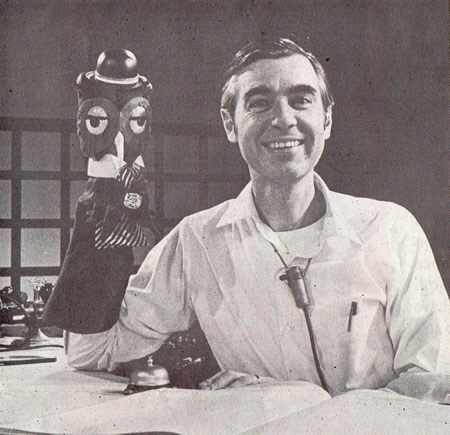
In this picture, I'm getting ready to make a program in the studio.
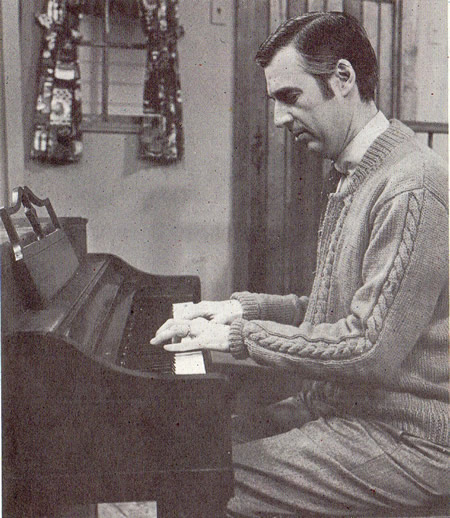
When there's waiting time in the studio, I like to play the piano or chat with friends.
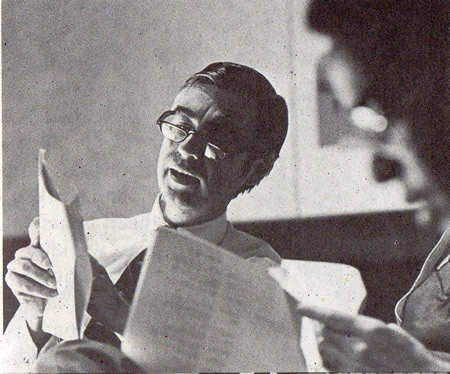
To make each program, I have to plan ideas and write the music for songs and operas.
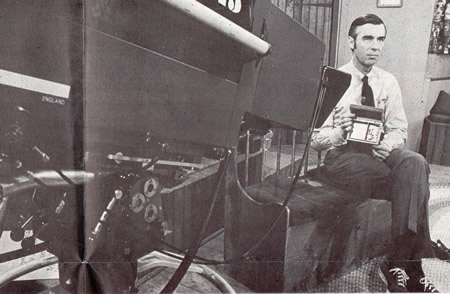
As the programs are made, I need the help of many other people. I need to talk to a film-maker about what's to be shown on Picture-Picture. I talk often to John Costa, the music director, about the music for a program. And in the studio, I need the help and skill of people who work with sound and light, and people who take care of cameras and microphones.
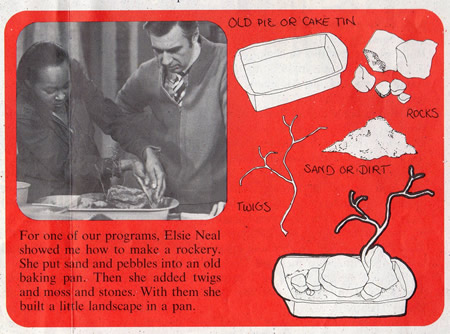
For one of our programs, Elsie Neal shows me how to make a rockery. She put sand and pebbles into an old baking pan. Then she added twigs and moss and stones. With them she built a little landscape in a pan.
Now and then, you meet people who have found work to do into which they can pour their deepest loves and best interests. Fred Rogers is one of those people. His love of music and puppetry, his interest in children and in television have all come together in Mister Rogers' Neighborhood.
Many of the interests Fred Rogers draws on for Neighborhood programs began in his own childhood. He was born on March 20, 1928 in Latrobe, Pennsylvania. Some of his sensitivity to children can be traced to his struggling to understand his relationship with his sister Elaine, who came along when he was eleven. His love of music, language, and creative expression was happily encouraged by his parents and grandparents and neighbors. In 1951, he graduated from Rollins College with a Bachelor of Music in Composition, and in 1952, he married Joanne Byrd, a pianist. He planned to enter the seminary the next year.
But at home during Easter vacation, Fred Rogers happened to watch some television shows for children. What he saw -- mostly pie throwing and slapstick -- appalled him. He felt that children's television needed performers and producers who understood their audiences and cared about them. So instead of entering the seminary, Fred Rogers headed for New York and NBC-TV, where his television apprenticeship included work on such shows as The Voice of Firestone, The Kate Smith Hour, and the NBC Opera Theatre.
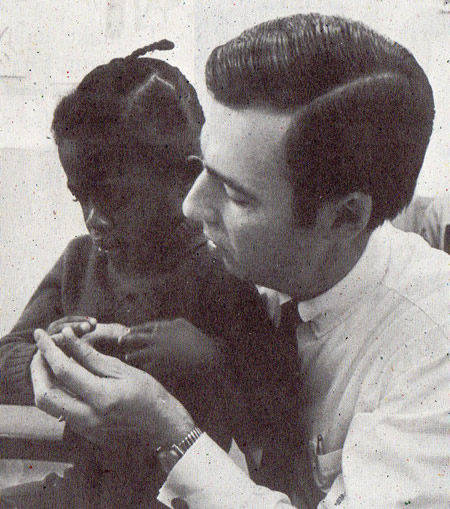
In 1953, Fred Rogers moved to Pittsburgh to work for WQED, the nation's first community-supported TV station. There he produced an hour-long program called "Children's Corner," with Josie Carey as host. Besides being producer, he also played the background music and worked hand puppets. During his lunch hours and at night, he managed to keep working on the once-postponed degree at Pittsburgh Theological Seminary. He took graduate courses in child development and psychology, and worked closely with children in association with Dr. Margaret McFarland of the University of Pittsburgh School of Medicine. In 1962 he became a Presbyterian minister and was ordained to work with children and families through the mass media.
During the years of working on Mister Rogers' Neighborhood, Fred Rogers has continued to weave his interests in music, children, and television together in the easy setting of the Neighborhood. He has won NET, Peabody, and Sylvania awards, a Saturday Review Television Award, and others. But the assurance Fred Rogers treasures most comes from families and children who write to share with him the many ways they find to use the program in their own lives.
Not everything Fred Rogers does on television is perfect. He misbuttons a sweater. He experiments with playing a trumpet, and finds that it's hard to make even a single clear note. He drops a shoe he had tossed into the air to catch.
The presence of little awkwardness and setbacks in Mister Rogers' Neighborhood is intentional. After all, it is possible in a television studio to reshoot any scene that isn't perfect. But Fred Rogers wants them there for a special reason.
Children need to be accepted whole, with all their good and bad points, with their daily quota of goofs and spills. So each day, Fred Rogers presents himself just as he is, an interesting grownup who accepts children just as they are. He trusts that the children who watch him don't mind that he isn't Superman, or that once in a while, just like them, he spills something or misplaces his watch or discovers an untied shoelace. Fred Rogers' sincerity in presenting the real quality of his own daily life has become his way to tell children that you can be yourself and still be liked.
Note: If you miss a program that you or your child is particularly interested in, check with your local station to see when it will be repeated. Give them the program number.
Week of December 30
Planet Purple is renamed Planet Purple Fairchilde in honor of Lady Elaine (#488). The McFeelys show Mister Rogers an owl (#487) and Mister Rogers looks at a voting machine (#489). Chef Brockett and Barbara Russell put on clown makeup (#490).
Week of January 6
The Neighborhood of Make-Believe plans a Potato Harvest Festival and Lady Elaine volunteers to supply maple syrup for the waffles they will be serving (#491). She winds up making her own brown-sugar "Hurry-Up Syrup" instead and the Festival (#495) is a great success. A cooper visits Mister Rogers (#492) to make buckets and Elsie Neal shows how to make a rockery (#495).
Week of January 13
Mister Rogers nephews Danny and Brooke visit (#496) and John Reardon and Lady Elaine discuss parts for the "work opera." Don Riggs plays some of his homemade instruments (#497). A diamond cutter explains how diamonds are mined and cut (#499). On Friday, the opera ALL IN THE LAUNDRY is performed (#500).
Week of January 20
Tim Scanlon, who is deaf and uses sign language, visits Mister Rogers (#501). He performs with the National Theatre of the Deaf. During this week, Tim also plays X's teacher in Make-Believe (#503). Mister Rogers demonstrates a hearing aid and explains how it sounds (#504).
Week of January 27
X the Owl makes a xylophone (#506). Lady Elaine Fairchilde pretends the baseball bat Corny gave her is an "engagement bat" and makes plans for their wedding! (#507). Elsie Neal talks with a weaver (#509), and Chrissie Thompson visits her grandparents, the McFeelys (#510).
Credits
Around the Neighborhood and the materials that accompany it are published ten times a year by Family Communications, Inc., a not-for-profit Pennsylvania corporation. Mister Rogers' Neighborhood is funded by grants from the Sears-Roebuck Foundation and the Corporation for Public Broadcasting.
Around the Neighborhood is created in association with Media Projects Incorporated of New York. Subscriptions, printing, and distribution are accomplished by Multiscope, Inc., Pittsburgh, Pa.
Executive Editor: Sara Stein
Editor: Barbara Staib
Editorial Consultant: Hedda Sharapan
Psychological Consultant: Dr. Margaret McFarland
Graphic Designer: Fred Poffenberger
© 1975 Family Communications Inc.
